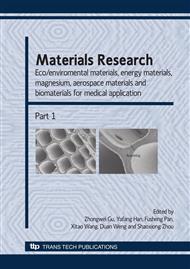p.1319
p.1323
p.1327
p.1331
p.1335
p.1339
p.1343
p.1356
p.1360
Osteogenesis of Porous Bioceramics Scaffolds Consisted of Hydroxyapatite Spherules after Implanted in Different Non-Osseous Sites
Abstract:
The interconnected porous scaffolds are crucial to support the attachment, differentiation, proliferation of cells so to construct 3-dimensional (3-D) tissues. Up to now, there are several approaches to prepare porous scaffolds. In our experiments, we designed a novel porous bioceramic scaffold, called the hydroxyapatite (HA) spherule scaffold, by accumulating HA spherules in an HA porous tube to establish an interconnected porous structure which can be reconstructed exactly. The porous HA tube was manufactured by polymer sponge template while HA spherules were prepared by sol-gel process. In the animal experiment, the HA spherule scaffolds were implanted at 2 different non-osseous sites such as muscle and abdominal cavity in dogs. The new bone growth was investigated after six months. The preliminary results demonstrated that the proliferation of osteocytes on the scaffolds in muscle was obviously better than in abdominal cavity, and about ten times more blood vessels (BVs) were appeared in the former site than those in the latter site. This study presents an alternative way to reveal the relationship between the porous structure of scaffolds and ectopia bone growth because the interconnection and porosity can be controlled easily by the size and porosity of HA spherules.
Info:
Periodical:
Pages:
1335-1338
Citation:
Online since:
January 2009
Authors:
Price:
Сopyright:
© 2009 Trans Tech Publications Ltd. All Rights Reserved
Share:
Citation:


